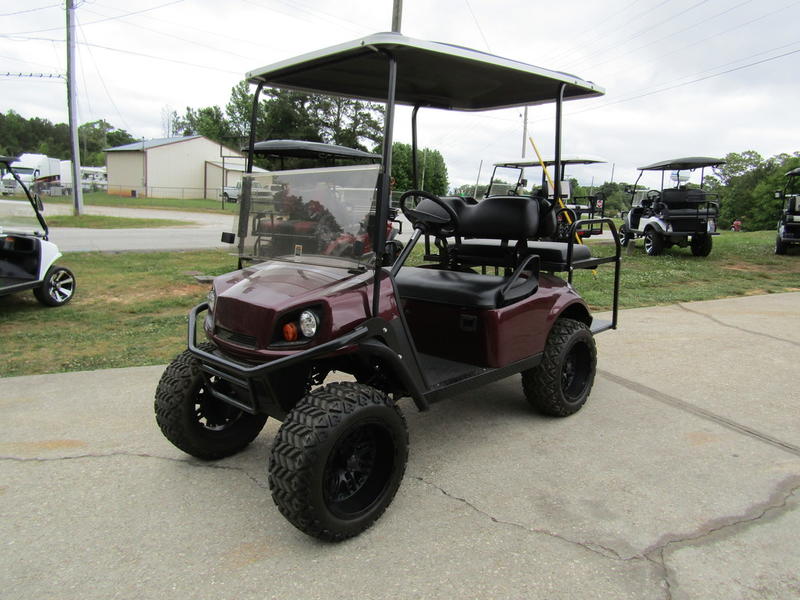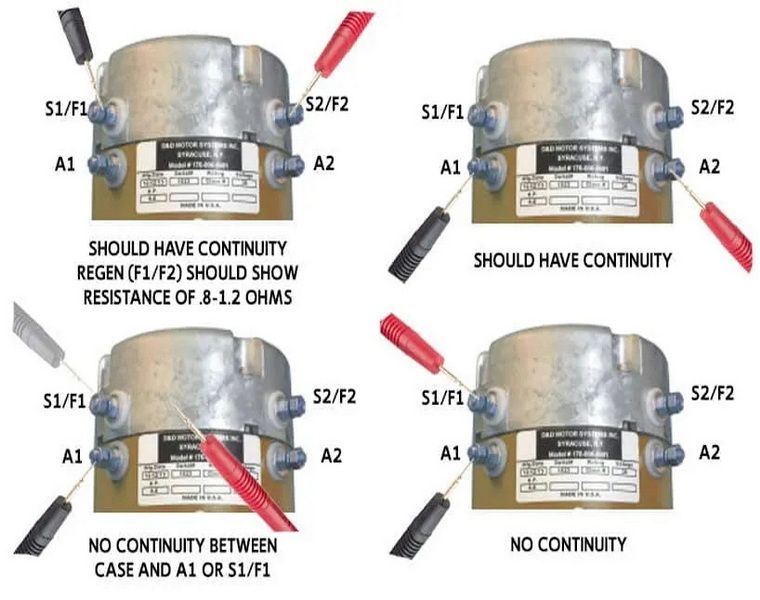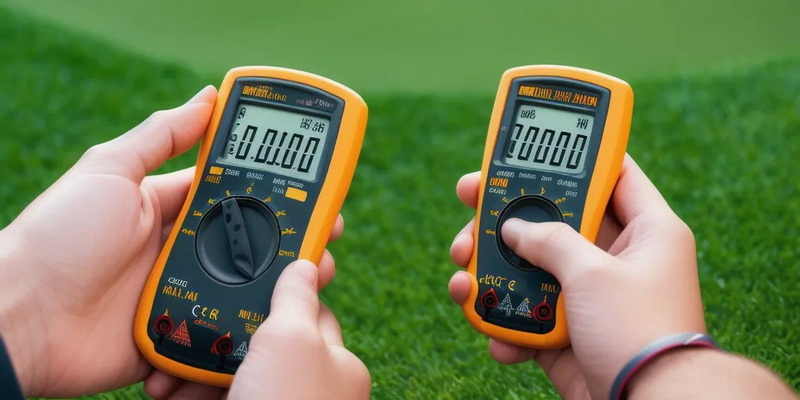Content Menu
● Understanding Your Golf Cart Motor
● Tools You Will Need
● Step-by-Step Guide to Checking Your Electric Motor
>> Safety First
>> Inspect the Battery
>> Check Wiring Connections
>> Testing for Continuity
>> Check Voltage at Motor Terminals
>> Inspect Motor Brushes
>> Check for Shorts
>> Test Power Output
● Maintenance Tips
● Troubleshooting Common Issues
>> Solenoid Issues
>> Controller Malfunctions
>> Potentiometer Problems
● Additional Considerations
● Conclusion
● FAQ
>> 1. What tools do I need to check my golf cart's electric motor?
>> 2. How do I know if my battery is bad?
>> 3. What does it mean if there's no continuity in my motor?
>> 4. How often should I perform maintenance on my golf cart?
>> 5. Can I fix my golf cart's electric motor myself?
Electric golf carts are a popular choice for leisurely rides on the golf course, but like any vehicle, they can experience issues over time. One of the most critical components of an electric golf cart is its motor. Knowing how to check and troubleshoot your electric motor can save you time and money. This guide will provide detailed steps on how to check the electric motor on a golf cart, along with tips for maintenance and troubleshooting.

Understanding Your Golf Cart Motor
Before diving into testing procedures, it's essential to understand the basic components of an electric golf cart motor. The motor converts electrical energy from the batteries into mechanical energy to drive the cart. Most golf carts use either series wound or shunt wound motors.
- Series Wound Motors: These motors are commonly used in older models and provide high torque at low speeds. They are ideal for applications requiring strong pulling power but may not be as efficient at higher speeds.
- Shunt Wound Motors: These are more efficient and provide better speed control. They are commonly found in newer models and offer a smoother ride, making them suitable for varied terrains.
Tools You Will Need
To check your electric motor, gather the following tools:
- Multimeter
- Jumper cables
- Screwdriver set
- Wrench set
- Safety gloves and goggles
- Cleaning supplies (like a brush and cloth)
- Torque wrench (for reassembly)
Step-by-Step Guide to Checking Your Electric Motor
Safety First
Before performing any tests, ensure that your golf cart is turned off, and remove the key from the ignition. Wear safety gloves and goggles to protect yourself from electrical hazards.
Inspect the Battery
A weak or dead battery can cause motor issues. Check the battery voltage with a multimeter:
- Set the multimeter to the DC voltage setting.
- Connect the red lead to the positive terminal and the black lead to the negative terminal.
- A healthy battery should read between 36 to 48 volts.
If the voltage is low, charge or replace the batteries before proceeding.

Check Wiring Connections
Inspect all wiring connections leading to and from the motor. Look for:
- Loose or corroded connections
- Damaged wires
- Signs of wear or fraying
Tighten any loose connections and replace damaged wires as necessary. Properly secured connections ensure that electricity flows efficiently, preventing overheating or further damage.
Testing for Continuity
Using a multimeter, you can test for continuity in your motor:
- Disconnect all wires from the motor terminals.
- Set your multimeter to continuity mode.
- Place one probe on one terminal and the other probe on another terminal.
- A beep indicates continuity; no beep means there may be an issue within the motor.
This step is crucial as it helps identify internal faults that may not be visible externally.
Check Voltage at Motor Terminals
Next, check if voltage is reaching the motor:
- Reconnect all wires except for those leading to the motor.
- Use jumper cables to connect a known good battery directly to the motor terminals.
- Observe if the motor runs when power is applied.
If it does not run, further investigation is needed.
Inspect Motor Brushes
Motor brushes can wear out over time, leading to performance issues:
- Remove any covers protecting the brushes.
- Inspect them for wear; they should be at least 1/4 inch long.
- Replace if they are worn down.
Worn brushes can cause poor electrical contact and reduced performance, so regular inspection is vital.
Check for Shorts
To ensure there are no shorts in your motor:
- Set your multimeter to ohms.
- Test between each terminal and ground.
- There should be no continuity (infinite resistance) between terminals and ground.
Short circuits can cause significant damage to your motor if not addressed promptly.
Test Power Output
To measure power output, you need a power meter:
1. Connect your power meter to measure voltage and current while running.
2. Calculate power using
This will help you determine if your motor is functioning within manufacturer specifications.

Maintenance Tips
Regular maintenance can prolong your golf cart's life and prevent costly repairs:
- Battery Maintenance: Regularly check water levels in flooded lead-acid batteries and ensure terminals are clean and free of corrosion.
- Wiring Inspection: Periodically inspect wiring for signs of wear or corrosion; replace any damaged wires immediately.
- Motor Cleaning: Keep the motor clean from dirt and debris that could affect performance. Use compressed air or a soft brush to remove dust buildup around vents and components.
Troubleshooting Common Issues
If your golf cart still isn't functioning correctly after testing, consider these common problems:
Solenoid Issues
The solenoid engages power to the motor when you press the accelerator. If it's faulty, it may not send power correctly. Listen for a clicking sound when pressing down on the pedal; if you don't hear it, test or replace the solenoid.
Controller Malfunctions
The controller regulates power flow from batteries to the motor. If it's malfunctioning, it may not deliver sufficient power. Check connections and test with a multimeter; if necessary, consult with a professional about replacing it.
Potentiometer Problems
The potentiometer sends signals from the accelerator pedal to control speed. If damaged or misaligned, it may prevent acceleration or cause erratic speed changes.
Additional Considerations
Understanding how environmental factors affect your electric golf cart's performance can also help in troubleshooting:
- Temperature Effects: Extreme temperatures can affect battery performance significantly; cold weather can reduce battery capacity while excessive heat can lead to overheating issues in both batteries and motors.
- Terrain Impact: Regularly driving on steep inclines or rough terrain can put additional strain on your motor; consider adjusting usage patterns if you frequently encounter these conditions.
Conclusion
Checking an electric motor on a golf cart involves several steps including inspecting batteries, testing continuity, checking wiring connections, and more. Regular maintenance can help avoid many common issues that arise with electric motors in golf carts. If problems persist after troubleshooting, consulting with a professional may be necessary.
Taking proactive measures will not only enhance performance but also extend the lifespan of your golf cart's components. By understanding how each part works together and performing regular checks, you can enjoy many trouble-free rounds of golf with your electric cart.

FAQ
1. What tools do I need to check my golf cart's electric motor?
You will need a multimeter, jumper cables, screwdrivers, wrenches, safety gloves, goggles, cleaning supplies (like a brush and cloth), and possibly a torque wrench for reassembly.
2. How do I know if my battery is bad?
Check the battery voltage with a multimeter; it should read between 36 to 48 volts for most golf carts. If it reads significantly lower than this range after charging, consider replacing it.
3. What does it mean if there's no continuity in my motor?
No continuity indicates that there may be an internal issue within your motor that requires further inspection or replacement; this could involve damaged windings or other faults inside the motor housing.
4. How often should I perform maintenance on my golf cart?
Regular maintenance should be performed every few months; however, battery checks should be done weekly during heavy use periods or before long outings to ensure optimal performance.
5. Can I fix my golf cart's electric motor myself?
Many issues can be resolved with basic tools and knowledge; however, complex problems such as internal repairs may require professional assistance due to safety concerns with electrical systems.











































